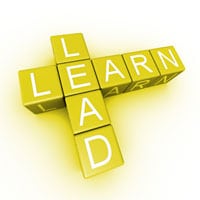Over the last couple years, I’ve helped start and grow several creative teams in agencies and consulting companies starting as a single ‘creative’ beachhead and transitioning into a team or creative lead. Some might think that evolution is a natural process—it isn’t. Many people who hold an associate or full creative director title tend to be highly experienced in their skillsets, but  perform as individual contributors who fail to make an impact outside of their own projects. Developing oneself and embracing a leadership role is simplified by following strategic lessons I’ve offered to others who’ve asked for insights over the years, and that I’d like to share with you.
perform as individual contributors who fail to make an impact outside of their own projects. Developing oneself and embracing a leadership role is simplified by following strategic lessons I’ve offered to others who’ve asked for insights over the years, and that I’d like to share with you.
Lesson 1 Be Valuable
Creating value for any organization lies in thinking big, in understanding what an organization needs to reach its goals. Is it lacking creative ideation? Then consider your potential as a source and muse for thinking and execution. Is it lacking in client partnership and leadership? You need to show commitment to the client and build relationships where clients come to you for guidance. Support your organization and those around you by finding ways to fill gaps. Think like the leader you want to be, and demonstrate—to everyone at every level—that you are the solution. I remember once accepting a new role as a user experience lead. I was hired to improve a relatively small team, but the organization’s needs extended beyond that. Looking around, there wasn’t another person to wear those additional hats, and I decided to take on the added responsibility. The positive effect of someone stepping out of an assigned role in a respectful way helped shape the agency going forward.
Lesson 2 Role Vs. Persona
Next, understand the intricacies of the role you are assigned. One weakness many creatives have is confusing work persona with role. Your persona is your leadership style, your perspective, sense of humor, and things you value. Though you’re hired partly because of your persona, your value lies in knowing how your role solves specific organizational needs. At one time I was performing well as the lead creative and was assigned to a new high-profile client. My manager kept checking in with me and things seemed bumpy, until I realized why: I didn’t fully realize roles are fluid. I needed to embrace the activities of a team leader—in this case, it was what was expected, if not voiced—but I was still operating down in the weeds. After accepting the role of leader everything clicked, and a potential fail became a teachable moment.
Lesson 3 Establish Yourself
If you are new to an organization, allow yourself enough time to see one or two projects through from start to completion. Use the time to understand personalities, motivations and process. Build trust, understanding how and why colleagues do what they do. Without that, any change you want will be shortsighted and lack support.
Lesson 4 Don’t Be a Niche Player
A challenge for creatives trying to become creative leaders is that they cling tightly to their old background discipline. Good creatives hyper-focus to excel in their areas of expertise, which makes sense when you are responsible only for one element within a product. To be a leader, especially in an industry in which excellence balances human understanding and digital savvy, you need to look at the whole picture to deliver user satisfaction, company and client goals. Plus, the more broadly you think and involve others, the more they want to deliver great work for you.
Lesson 5 Manage Yourself Out Of a Job
Yes, I am telling you to make yourself replaceable. Managing yourself out of a job means neither losing your job nor, certainly, slacking off. To do the best job possible you need to support your team to become more capable and self-sufficient. Take time to train and guide others and consistently give and get feedback. Increased team talent and self-direction creates opportunity for them and ultimately, for you. Your next step lies in the freedom to explore possibilities you have created upon this foundation.
The road to creative leadership isn’t a straight line. There aren’t established routes or paths that guarantee success. Clearly, delivering powerful creative work is critical to becoming a creative leader. But remember: organizations need both creative individuals and creative leaders, and those who want to be more than individual contributors have only to expand their thinking and skillsets to make that happen.
Eniola Oluwole is senior vice president, group creative director at Genuine. He can be reached at eoluwole@wearegenuine.com.
 Network
Network

